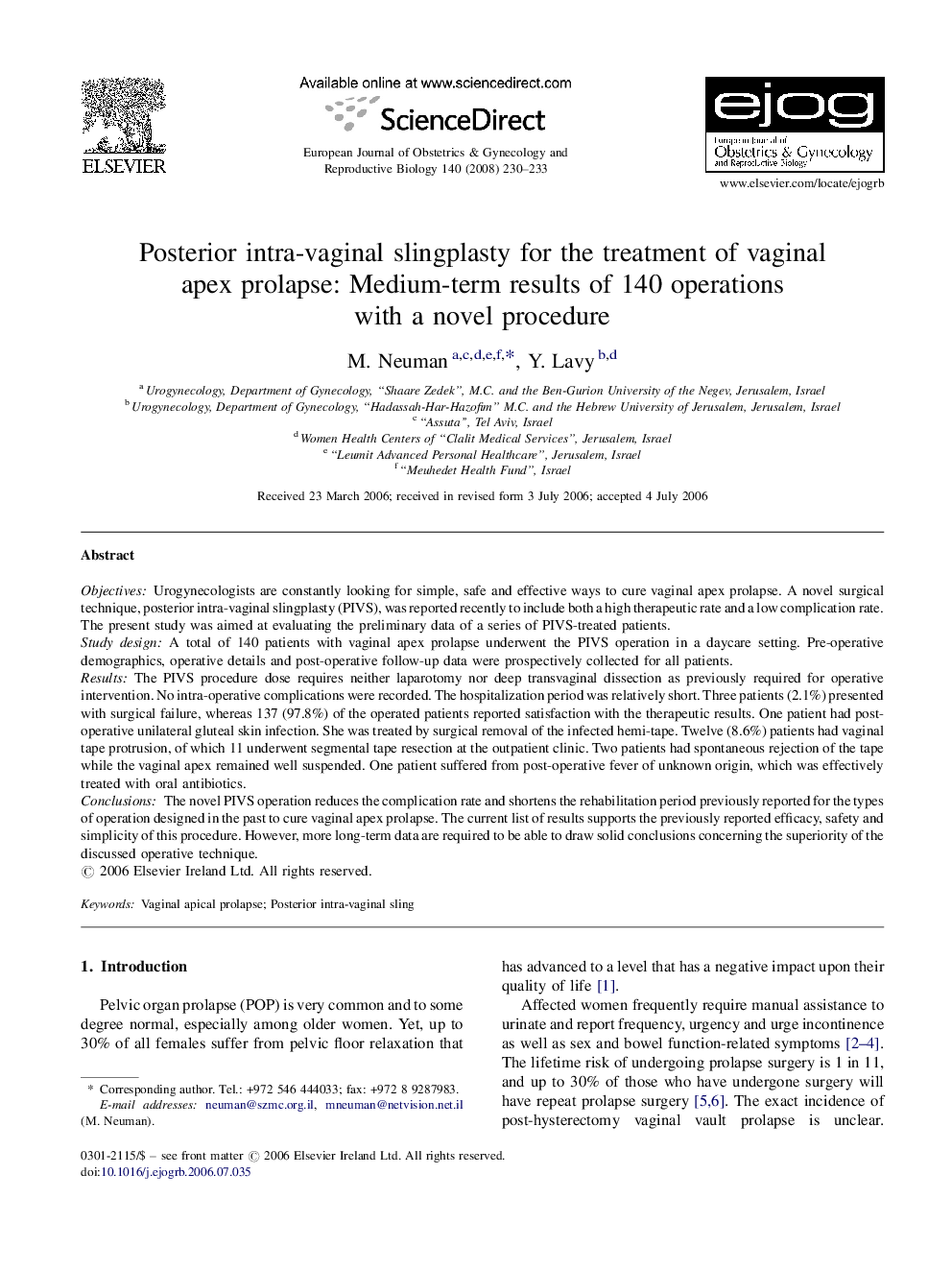| Article ID | Journal | Published Year | Pages | File Type |
|---|---|---|---|---|
| 3921640 | European Journal of Obstetrics & Gynecology and Reproductive Biology | 2008 | 4 Pages |
ObjectivesUrogynecologists are constantly looking for simple, safe and effective ways to cure vaginal apex prolapse. A novel surgical technique, posterior intra-vaginal slingplasty (PIVS), was reported recently to include both a high therapeutic rate and a low complication rate. The present study was aimed at evaluating the preliminary data of a series of PIVS-treated patients.Study designA total of 140 patients with vaginal apex prolapse underwent the PIVS operation in a daycare setting. Pre-operative demographics, operative details and post-operative follow-up data were prospectively collected for all patients.ResultsThe PIVS procedure dose requires neither laparotomy nor deep transvaginal dissection as previously required for operative intervention. No intra-operative complications were recorded. The hospitalization period was relatively short. Three patients (2.1%) presented with surgical failure, whereas 137 (97.8%) of the operated patients reported satisfaction with the therapeutic results. One patient had post-operative unilateral gluteal skin infection. She was treated by surgical removal of the infected hemi-tape. Twelve (8.6%) patients had vaginal tape protrusion, of which 11 underwent segmental tape resection at the outpatient clinic. Two patients had spontaneous rejection of the tape while the vaginal apex remained well suspended. One patient suffered from post-operative fever of unknown origin, which was effectively treated with oral antibiotics.ConclusionsThe novel PIVS operation reduces the complication rate and shortens the rehabilitation period previously reported for the types of operation designed in the past to cure vaginal apex prolapse. The current list of results supports the previously reported efficacy, safety and simplicity of this procedure. However, more long-term data are required to be able to draw solid conclusions concerning the superiority of the discussed operative technique.
